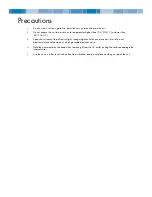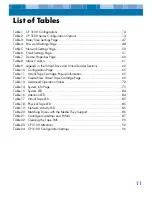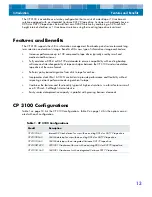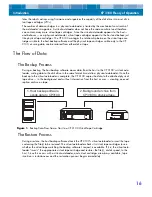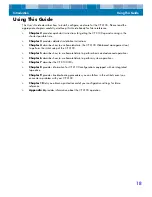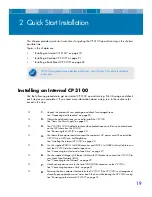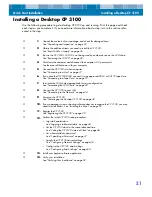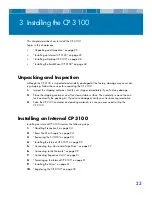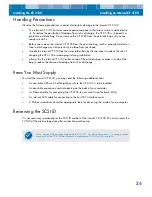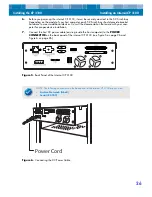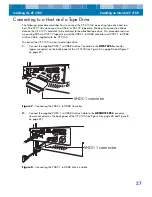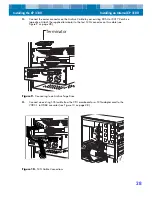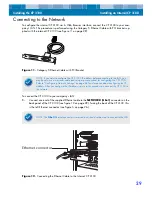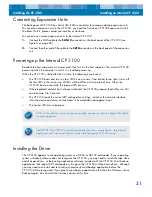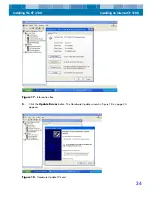
19
2 Quick Start Installation
This chapter provides quick-start instructions for getting the CP 3100 up and running in the shortest
possible time.
Topics in this chapter are:
•
“Installing an Internal CP 3100” on page 19
•
“Installing a Desktop CP 3100” on page 21
•
“Installing a Rack-Mount CP 3100” on page 22
Installing an Internal CP 3100
Use the following procedure to get an internal CP 3100 up and running. Print this page and check
each step as you complete it. If you need more information about a step, turn to the section refer-
enced in the step.
NOTE:
If you prefer more detailed instructions, see Chapter 3 for drive installation
instructions.
❑
1.
Unpack the contents of your package, and check for damaged items.
See “Unpacking and Inspection” on page 23.
❑
2.
Obtain the additional items you need to install the CP 3100.
See “Items You Must Supply” on page 24.
❑
3.
The CP 3100’s SCSI ID defaults to that of the attached tape drive. Be sure no other device
on the SCSI chain has this SCSI ID.
See “Reviewing the SCSI ID” on page 24.
❑
4.
Shut down the computer and disconnect the computer’s AC power cord. Then install the
CP 3100 in a 5.25-inch, half-height bay.
See “Installing the Internal CP 3100” on page 25.
❑
5.
Use the supplied VHDC-1 to HD68 converter and VHDC-1 to HD68 Archive Cable to con-
nect the CP 3100 to a host and a tape drive.
See “Connecting to a Host and a Tape Drive” on page 27.
❑
6.
Use the supplied Category 5 Ethernet Cable with PCI bracket to connect the CP 3100 to
your Local Area Network (LAN).
See “Connecting to the Network” on page 29.
❑
7.
Attach any expansion units to the Serial ATA (SATA) connectors on the CP 3100.
See “Connecting Expansion Units” on page 31.
❑
8.
Power-up the host computer that contains the CP 3100. If the CP 3100 is not recognized,
close all open applications and “warm boot” the host while leaving the CP 3100 running.

